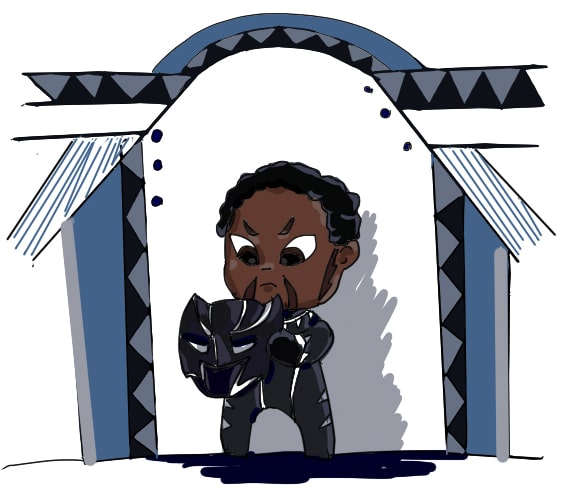“Black Panther” is not the greatest film ever made, nor is it the abomination sent to usher in the end-times that some corners of the internet would have you believe. But it’s not exactly reinventing the wheel either. Even so, it’s the best Marvel film by a mile. Honestly, much worse films have won the Oscar for Best Picture (I’m looking at you, “Crash”).
Visually, “Black Panther” is — pardon the pun — marvelous. Director Ryan Coogler and Production Designer Hannah Beachler built Wakanda from scratch. The result might be the most groundbreaking depiction of a futuristic society since Ridley Scott’s dystopian L.A. in “Blade Runner.”
Rather than relying entirely on the backstory to convey Wakanda’s history, Coogler, Beachler and costume designer Ruth Carter create an aesthetically sumptuous social landscape; it feels lived-in.
Wakandan society is staunchly traditional and isolationist; it was never colonized and rarely interacts with the rest of the world. Coogler and Beachler build that into the movie’s visual DNA, eschewing the standard sci-fi skylines of uniform glassy skyscrapers for a medley of varying building heights and styles. Those buildings also draw on the architectural traditions of myriad African tribes, giving them a sense of place. The infrastructure reflects the extent to which Wakanda has built every facet of its society with vibranium — a fictional, extremely versatile and valuable metal — catering to maglev streetcars and foot traffic, rather than cars and trains powered by fossil fuels. Even its futuristic weapons are modeled after spears and shields, rather than guns.
Carter’s costumes further highlight the internal diversity of Wakanda’s society, as well as its freedom from Western influence. They incorporate elements of color and geometry from cultures across the African continent. The Black Panther suit has a triangular Okavango pattern. The uniforms of the Dora Milaje — King T’Challa’s elite female bodyguards — embody motifs from the Turkana and Maasai cultures. Lupita N’yongo’s character, Nakia, wears costumes inspired by the Ethiopian Surma people. The list goes on. Using these influences, the costumes illustrate Wakanda’s cultural variety, as well as the tensions that come with them.
Because of the design, the script is airtight. Except for a concise animated prologue giving the quick hits of Wakandan history, “Black Panther” never gets bogged down with exposition or sci-fi/fantasy mumbo-jumbo. It gets right to the point and lets the design fill in the details. It all makes for a masterful display of visual storytelling — especially surprising from such a famously unimaginative studio. It’s a world that I didn’t want to leave.
But while the movie’s design feels like new territory, the story structure is well-tread ground — it is, after all, still a Marvel movie. The plot, in which the king of a futuristic society fights to keep his unstable relative off the throne, bears an uncanny resemblance to the first and third “Thor” movies, for instance.
But it’s unfair to call this unoriginal. In spite of the fact that “Black Panther” hits nearly all the same narrative beats as any other Marvel movie, it does something unexpected within that formula: it actually says something worth listening to, that tradition and innovation can coexist and strengthen each other.
Marvel movies are always fine. Even the worst of them will at least kill the last two hours of a long flight without making you want to jump out of the airplane. Still, with a few exceptions, they’re totally forgettable. For example, I remember liking “Guardians of the Galaxy Vol. 2,” but I don’t have any memory of what actually happened (I remember Baby Groot dancing to ELO and that’s about it). Even “Thor: Ragnarok,” which I honestly loved, was still pretty by-the-numbers. The writing was sharper than usual, but I’d seen it a thousand times before: good versus evil, no lasting stakes, everything works out the way it’s supposed to.
But “Black Panther” doesn’t feel like that at all. This isn’t because it completely subverts the Campbellian superhero blockbuster tropes. Instead, it uses those tropes to its advantage. It’s not a rehash, but a remix, playing off the original formula’s strengths while adding something new and exciting.
The thematic core of “Black Panther” is still a binary conflict, but instead of good versus evil, it’s tradition versus innovation. By packaging such an original and exciting futuristic world and cast of characters in such a familiar package, Coogler — who also co-wrote the script — has spliced that central theme into the film’s genome before even introducing characters or plot points. Those smaller parts of the film follow that thematic blueprint as the film unfolds, like multiplying cells following the DNA’s instructions. The result isn’t just another clone: it’s a whole other animal.
![]()



































